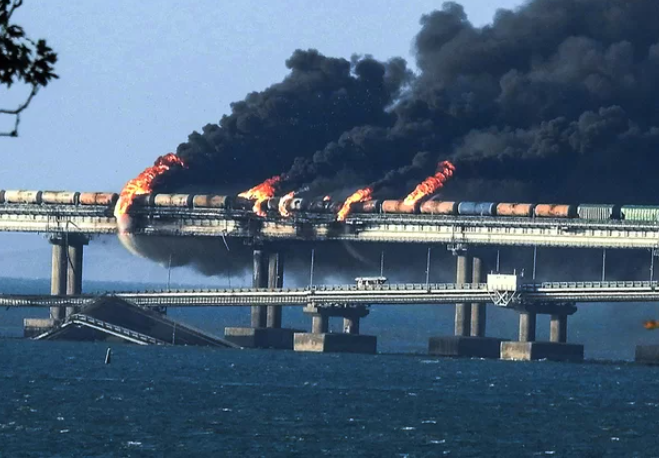Europe and the U.S. are also shaking in energy panic, are also shaking

Inflation is shaking the world economy. In particular, energy and food, the two pillars of inflation, are leading the high inflation rate. Among them, rising oil prices and energy supply turmoil triggered by the Russia-Ukraine war have brought inflation fears to the United States. energy panic
With the U.S. releasing a large number of reserves on its own and self-strengthening energy, Europe, which was geographically close to Russia, is becoming as dependent as the cold weather. How does the European energy crisis affect and change U.S. economic policy?
With the inauguration of the Joe Biden administration, US energy policy is on a different path from the Trump administration. With the return to the climate change system, eco-friendly energy policy has become a representative pledge of Biden. The Biden administration considers the “carbon neutrality policy” to eliminate carbon emissions in the power generation sector by 2035, and to eliminate carbon emissions in the entire United States by 205 as its top priority. This is an agenda not only for the United States but also for major countries around the world.
In fact, during the Barack Obama administration and the Trump administration, the United States increased its proud shale gas and oil production exponentially. Through this, it has boasted the appearance of an energy powerhouse and has used energy freely as a card to pressure them, standing shoulder to shoulder with energy-led countries such as Middle East Asia and Russia. This stance has changed a little bit in the Biden administration. This is because, at the same time as taking over the keynote of America’s First Policy from the Trump administration, they had to catch two rabbits together, the expansion of eco-friendly energy, which was a major pledge in the presidential election. In fact, the Biden government has been pushing for the Inflation Reduction Act (IRA) with the protection of the U.S. national interest, and is putting forward a strong U.S. by driving the Better Economic Recovery Act, a fiscal policy for infrastructure reconstruction.
Russia has put the brakes on the United States. Russia’s war with Ukraine began at the beginning of the year and continues until late autumn, when it gets chilly again. The end of the war is still invisible, and Russian President Putin’s voice is growing day by day. Immediately after the outbreak of the Russian War, the world was in panic. West Texas Intermediate (WTI) and Brent crude prices rose vertically, well above $100 a barrel, rising $120 and soaring food prices, including corn, corn and wheat, in the aftermath of the war in Ukraine, the world’s largest granary. The butterfly effect of the war spread beyond Europe to the rest of the world, including the Americas and Asia. As mentioned earlier, the United States has been hit hard even though it has buffers that can absorb these shock waves on its own. In particular, the problem arose in Europe. Europe has imported most of its energy, including natural gas, from Russia. The tighter the sanctions on Russia, the more serious the energy shortage has become. energy panic
In the absence of Russian alternatives, Russia’s provocations that rock Europe have effectively panicked Europe. In the midst of the energy crisis, European countries began to split into four parts by country by country. Countries that were unable to handle the surge in energy prices led to a rise in energy prices, and again joined hands with Russia to take the position that the energy alliance is an inevitable reality.
Europe, in particular, is already in a big crisis with inflation issues from Russia. In September, consumer prices in the eurozone rose 9.9% year-on-year. According to the European Union (EU) Statistics Office, it is facing an unbearable inflation burden, recording a virtually double-digit increase for two consecutive months following 10% in August. In particular, the energy sector accounted for 4.19% of the total growth rate. That means that energy-raising fears are still engulfing Europe. Turkiye’s inflation rate hit a 24-year high of 80.2% in August. Inflation in Turkiye has been rising for 15 months until August. Unlike Germany, which is on its own path, Turkiye eventually chose to join hands with Russia. Russia is pushing to make Turkiye a regional hub for natural gas and establish an international gas hub. As such, even Europe is trying to live without forming a single line, and the United States is also struggling with complicated calculations.
The U.S. interest rate hike is also likely to be maintained as the Fed’s measures to curb prices do not work properly. The problem is that this U.S. stance is raising fears of bankruptcy while keeping central banks around the world on edge. As much as the U.S. decision effectively affects the global economy, the eyes and ears are bound to be focused on U.S. policy.
In fact, the COVID-19 crisis is no longer an object of fear. In the end, the industry’s assessment is that the U.S. is holding the key.”It is by no means that oil and gas energy will be reduced at a rapid rate right now,” a Wall Street expert said. “The U.S. strategy is paramount as natural gas and petroleum energy remain key foundations in energy security and industrial activities.” It is true that Russian variables have a big impact right now, but if you overcome them well, another opportunity will be created, so a preparatory process must be accompanied. “In the post-COVID-19 era, it is important for us to eventually go back to square one and look at the entire energy strategy,” an energy expert said. “In the era of net zero and carbon neutrality, the U.S. policy will eventually have a big impact on energy policies in Korea and around the world.” energy panic